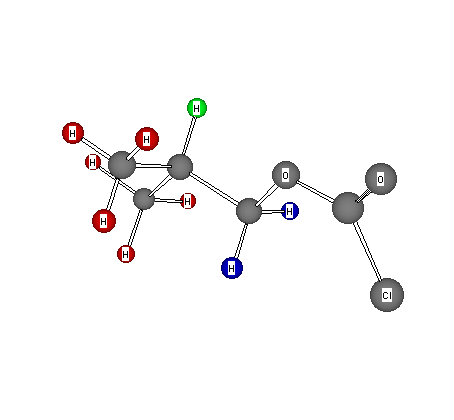Formula: C5H9ClO2
Answer: Isobutyl chloroformate
Chemical Shift Assignments: δ 0.99 (d, 6H), 2.06 (nonet, 1H), and 4.12 (d, 2H)
There is one degree of unsaturation and three types of hydrogens. The high field doublet at δ 0.99 is an indication of two equivalent methyl groups attached to a carbon bearing one hydrogen [(CH3)2CH-]. With one free valence for the rest of the atoms, the single hydrogen must be the nonet at δ 2.06. This leaves CH2ClO2. The low field doublet at δ 4.12 is attached to a carbon bearing a single hydrogen and the -CH2 is attached to oxygen [(CH3)2CHCH2O-]. The attachment must be to oxygen to have a free valence for the attachment of the remaining CClO. The methine hydrogen at δ 2.06 is equally coupled to eight vicinal hydrogens, thus it appears as a nonet. There is only one way to arrange CClO, and that is -C(=O)Cl.
The 13C NMR spectrum reveals four singlets. The weak signal at 149.5 ppm is the carbon of the C=O (no hydrogens attached to facilitate relaxation). The signal at 77.9 ppm is the carbon adjacent to oxygen (-CH2O-). Note that the small triplet at centered at 77.4 ppm is the carbon of CDCl3. The methine carbon [CH3)2CH-] is the signal at 27.7 ppm and the highest field signal at 18.4 ppm is the enantiotopic carbons of the methyl groups [CH3)2CH-]. Return to Menu.
 |
oxygen-orange chlorine-light green |
|---|